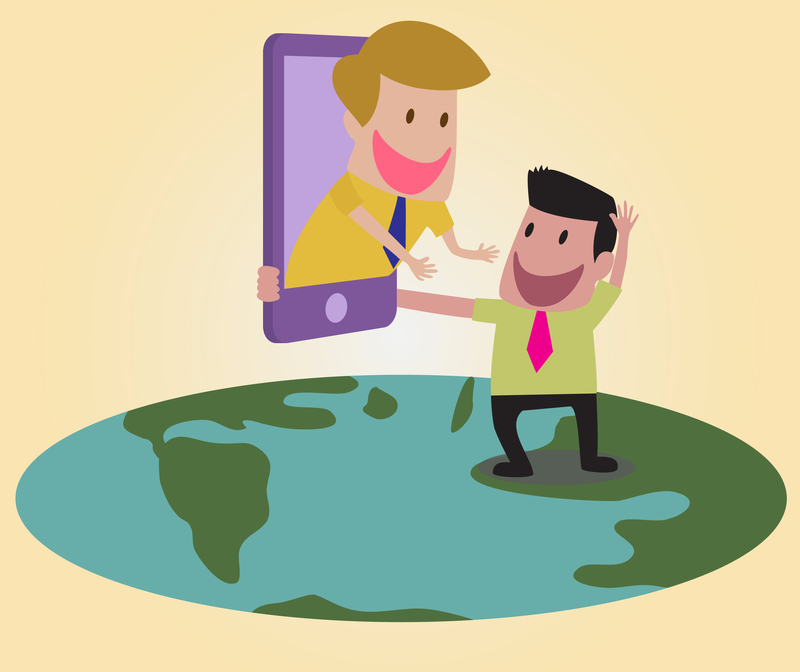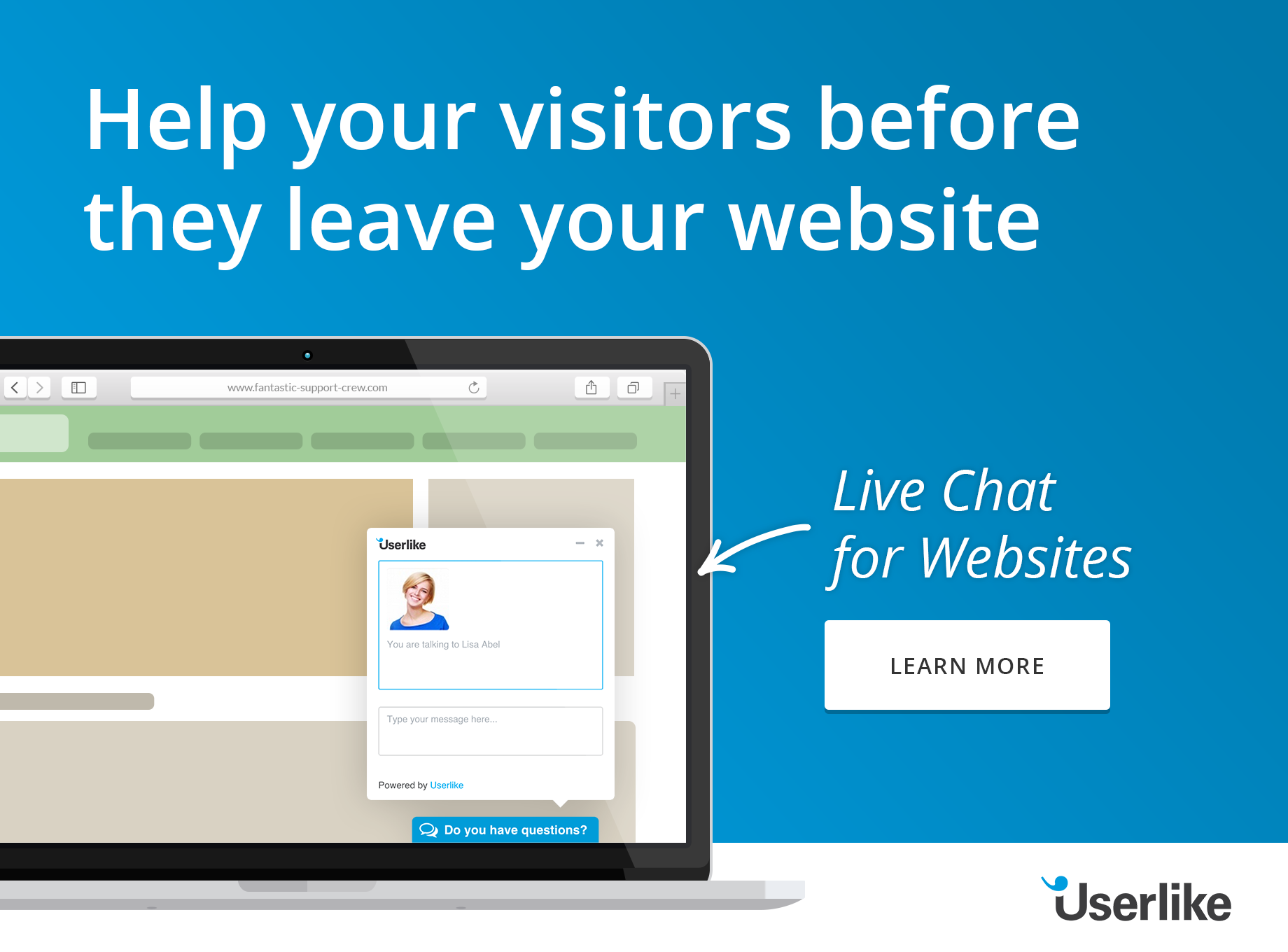
Customer Service Survival Guide for the Mobile Age
Recently, I had a negative customer service experience when a product that I ordered didn’t turn up. Appeals to the (national) companies involved on social media eventually got it sorted, but the response was far from instant and it couldn’t even solve the issue (which was that I’d have to wait a further eight full days before it was delivered). Eventually, one of the companies offered me an extended warranty and the other a £20 discount. All very good, but I still didn’t get my washing machine any sooner and was hugely inconvenienced.
This kind of story is common and the reason I mention it here is that there’s no need for such shoddy service from one, let alone two national companies that have the resources to deal with it. Sadly, there are still plenty of brands getting it wrong in the digital age. We hear weekly about new social media ‘fails’ and a trip to many of the big brand’s social media pages will see them filled with complaints and questions, many of which remain unanswered.

Some brands cope well with this and have got to grips with dealing with customers through social media, but now mobile has joined the party, giving an extra dimension to customer service while also filling consumers with higher expectations.
Social Media and Customer Support
To give some context to the discussion, first it’s important to understand just how much customer expectations have changed in recent years. The reason for this can be laid firmly at the door of social media. Social media meant that for the first time consumers had a public forum for laying out how happy or unhappy they were about their purchases and general interactions with a company.
In the past, people were forced in a queue should they contact a company by phone, or they sent a letter (yes, a letter, with a stamp and everything) or an email and were forced to wait for a reply. Social media provided consumers with an immediate outlet however, and companies in turn were forced to respond or risk losing a good reputation. So the power balance between the brand and the company was forever changed, with consumers holding most of the cards.

Enter Mobile
After social media became popular, so began the rise of the smartphone, resulting in what’s now thought of as the mobile revolution. It’s predicted that in just a few years, most of us will own around five internet-connected devices . Even though this takes into account devices that come under the Internet of Things umbrella, such as TVs, there’s little doubt that most of us will own at a minimum a smartphone and many of us will own another mobile device such as a tablet or netbook.
Since we habitually carry at least one of these devices with us at all times, we expect to be able to use them increasingly in everyday life – and that includes shopping and everything that comes with it. Research has shown that companies that “are able to skillfully manage the entire (customer) experience reap enormous rewards, enhanced customer satisfaction, reduced churn, increased revenue, and greater employee satisfaction.”

This all depends on how customer ‘touchpoints’ are managed; the more successfully a company can integrate its customer interaction and deal with it well at every level, the better the business fares. However, in a Harvard Business Review case study it was found that while customers might be happy with how well any one single point of contact might have done, overall they were unhappy when these communications weren’t unified. So today’s consumers not only expect a high level of communication, they also expect “cumulative experiences across multiple touchpoints and in multiple channels over time.”
So the modern consumer is a demanding one and one that expects a brand to be able to handle all communications well across all channels, including social media and mobile.
Handling Customer Expectations
All of the above means that today’s brands have to ensure that they are bang up-to-date with the technologies that its customers are using daily if they’re to maintain a strong brand and a good reputation. This applies to all aspects of the business, from marketing to customer service and after-sales support. When it comes to the latter, good communication is vital since often the service rep is dealing with someone who is frustrated and sometimes angry.
However, this is oftentimes severely lacking when it comes to something like in-app support, meaning that those same frustrated customers have to find other channels on which to contact the company in the event of something going wrong. This can be overcome by adding helpdesk capabilities to native apps. These can help to extend the lifetime of a customer by giving instant access to support so that any questions or problems can be dealt with in real time.
And, according to Venture Beat : “it can also auto-generate a lot of data about the customer in question — such as their purchase history and other account information — so the customer doesn’t need to provide it. That customer data doesn’t just help you answer tickets more effectively, you can also use it to create a more comprehensive profile over time so that each interaction gets easier and more meaningful.”
The Power of Data
This kind of helpdesk solution can aid the business in numerous ways. As mentioned above, you can use the data collected from customers to deliver even better customer service in the future. Imagine the scenario: an irate customer pops onto chat wanting to know why their order hasn’t turned up. The customer support representative has enough information at their fingertips to know several things:
- The customer’s purchase history
- The reason that the order has been delayed
- What contact the customer has had with support previously
They should also have the capability and authority to offer the customer some kind of recourse, such as a discount or some other kind of offer.
All of this makes for a happy customer who, rather than becoming more frustrated as they chase the company and their order around on social media to complain, have their issue dealt with instantly. Of course, it’s not necessary to do this just with native apps, if your business has a responsive website (and if it doesn’t in the mobile age, you should be asking yourself why not) then you can use commercial web chat apps integrated into the site.
As Forbes puts it, “mobile devices have turned us into instant gratification junkies” and this means that the company that offers instant support is the one that the customer is likely to return to again and again.

Capturing Actionable Content
Forbes goes on to point out that mobile gives us an unprecedented opportunity to capture content directly from the user and to be able to use that information in an accurate and actionable way. As data is collected from the user in real time, it can then be “delivered into processes and workflows that manage business transactions.”
This means that business apps and websites should now be reimagined by businesses to enable customers to have more control over how they engage with the brand. The impact on the life of the customer must be minimized to ensure that there is little intrusion into their daily lives and this means giving the customer what they want and expect – instant support when they have a question.
In turn, the customer will return to buy and will become an ambassador for the brand in that they’ll relate their good experiences over social media.
Integrating Web and App Experience
For those businesses that have an app and a fully-fledged website, often the customer experience is one that’s not seamless. Even those offering great customer support through the app are often failing to “break down the silos and integrate mobile within their whole web infrastructure.”
This makes for a disjointed customer experience, which again leads to frustration in the customer and ultimately, the potential loss of a customer. It’s common, according to 1to1 Media, to find that customers have begun communication with a company only to find that they have to repeat the same steps all over again when they arrive through a different channel. So, a customer may begin a support query in-app and then be directed to the website where they will have to begin the process from scratch.
“The next step is for organizations to be able to take customers who tried to self-serve through their mobile and transfer them pre-authenticated to an agent.”
Customers no longer expect to come up against this. They demand an integrated and seamless service whether they call up support via a native app, a website, or even a call center. The key to this is in the data, of course, as it’s this that gives the customer service rep the opportunity to pull up the customer service history, which should include records of communication and should be capable of transferring the customer to different channels without repetition.
Brave New World of Mobile
Within the past couple of decades, technology has raced ahead and changed the consumer-business dynamic considerably. Customers expect to be able to use mobile to have companies answer their queries quickly, whilst they’re on the go and the business that fails to recognize this is the one that will see competitors quickly overtake them.

Those that get it right and ensure that customers can self-serve with a good knowledge base, backed up by the ability to contact the company through an app or website chat function and gain instant support, will be the ones that win out.
About Userlike
Userlike is live chat software for websites, allowing companies to chat with their (potential) customers directly over the website. Look here for more information.


